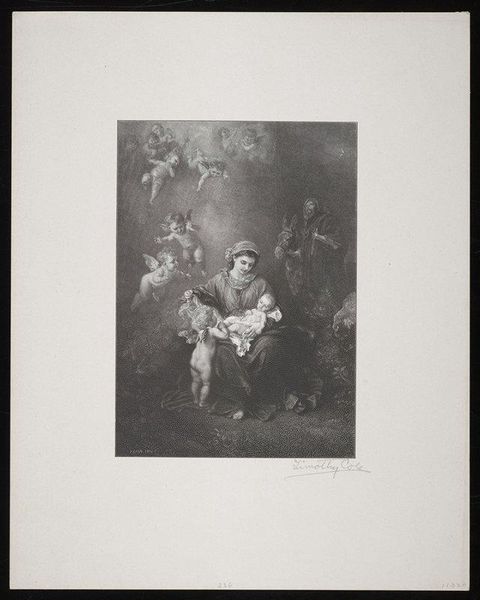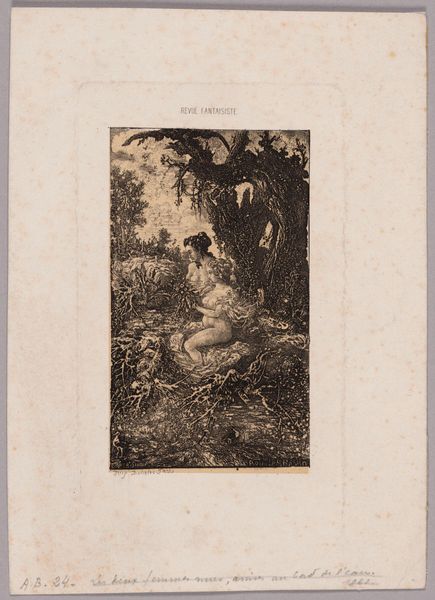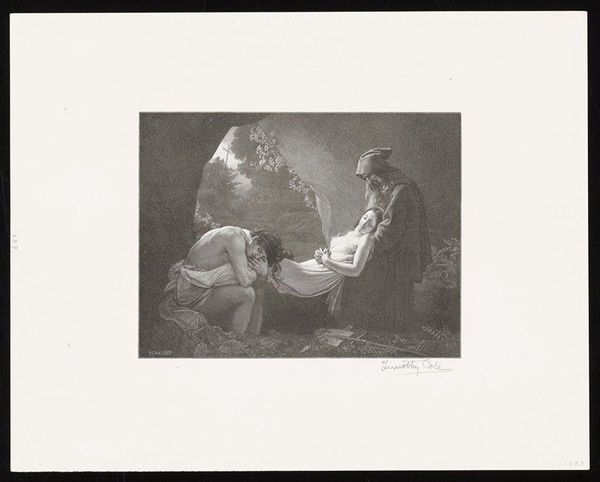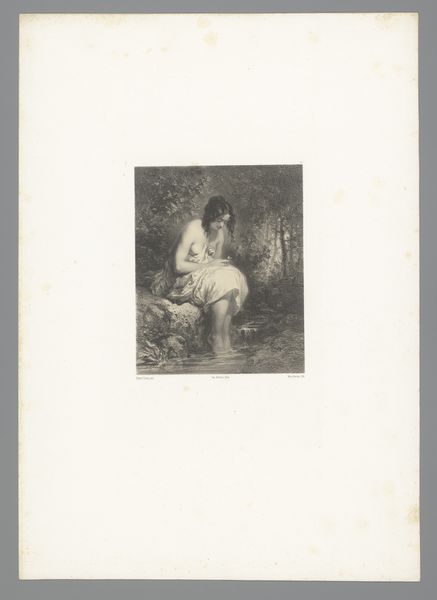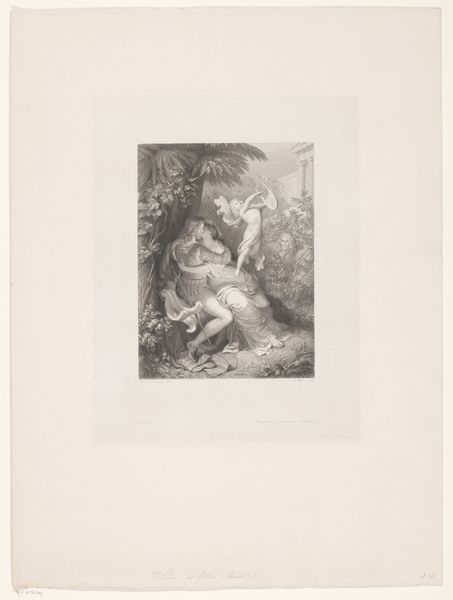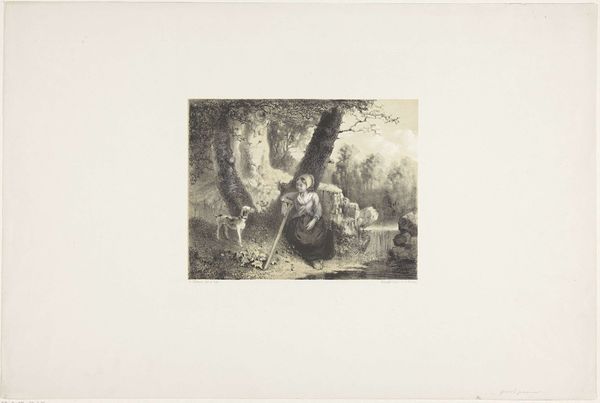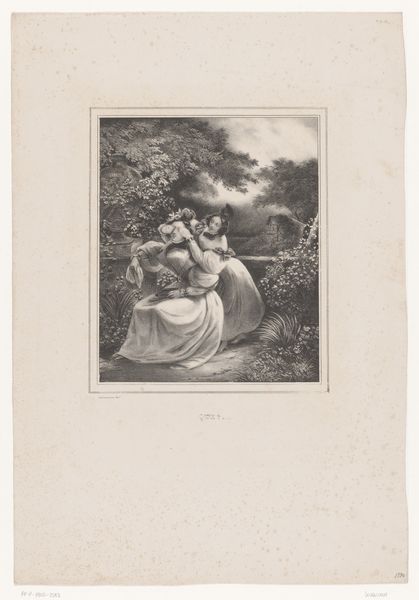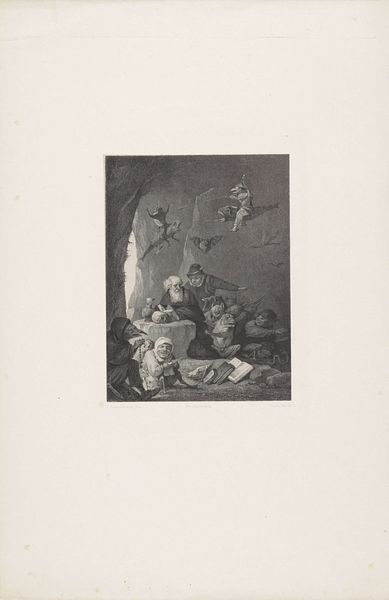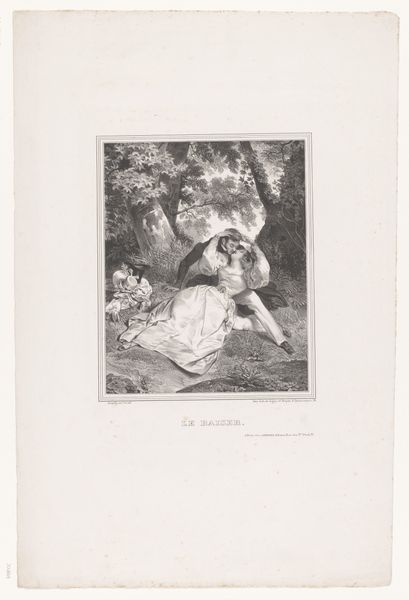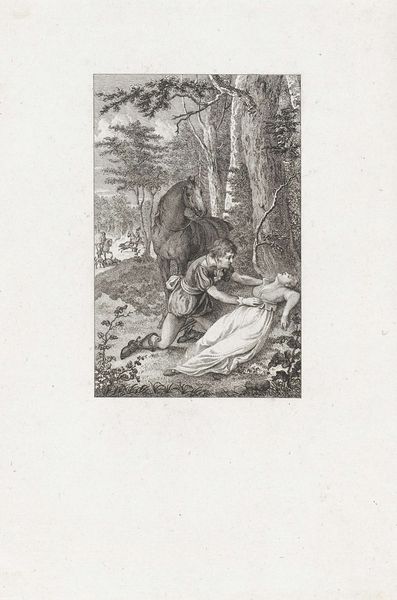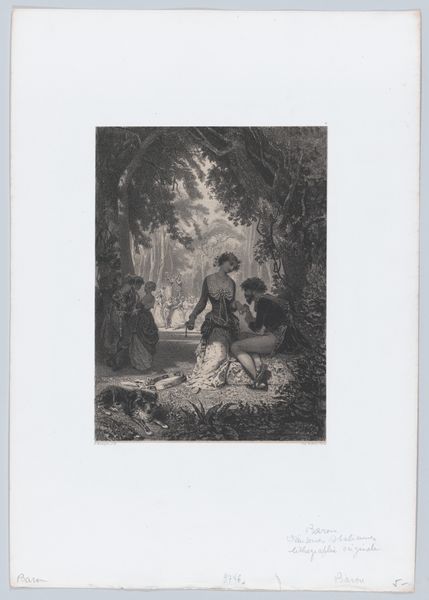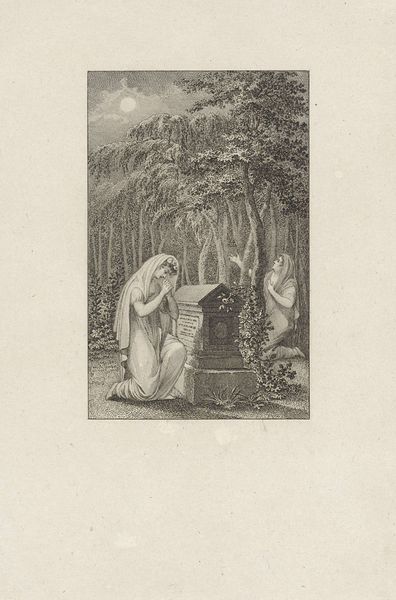
drawing, pencil
#
pencil drawn
#
drawing
#
pencil sketch
#
landscape
#
figuration
#
pencil drawing
#
forest
#
romanticism
#
pencil
#
pencil work
#
genre-painting
Dimensions: height 362 mm, width 276 mm
Copyright: Rijks Museum: Open Domain
Curator: Looking at this piece, "Meisje en jongen met een bos takken," made between 1837 and 1853 by Wilhelmus Cornelis Chimaer van Oudendorp, I'm immediately struck by its almost haunting tenderness. What are your first thoughts? Editor: It's quiet, isn't it? There's a strong interplay of light and shadow which draws your attention right to the figures but also leaves space for speculation beyond the two children depicted, giving it depth. A very classical composition that’s comforting and yet… something about it feels unresolved. Curator: Perhaps what you're sensing is the context of its making. Oudendorp's process using pencil gives this work a unique texture; consider the social implications - Who has access to drawing materials during that period? Who controls those materials? Pencil wasn't always common. Editor: Certainly the limitations inherent in pencil as a medium—the gray scale, the achievable fineness of line—impact the final form. I find the use of shading to create form compelling and the semiotic dimension to pencil lines quite fascinating when analyzed. I agree. There's much that it adds! The romanticism inherent in the piece adds to this, surely? Curator: Indeed. That aesthetic and focus on feeling is there, especially if you place this piece in the lineage of Dutch genre paintings. What were they representing in portraying such intimate scenes? Whose labor and life is made beautiful or at least picturesque by the work of children? Are they poor? Rich? In a field or farm where they've worked for the afternoon? Editor: Good questions that encourage a reading not only as a pretty rendering but as cultural object itself—a study in contrasts, perhaps? In the lines of faces and landscape we read and question notions of innocence but are left instead with many more lines of thought. Curator: Yes! The production and consumption are very interesting here, if nothing else. Thank you for that discussion; my appreciation of its composition grew. Editor: And for me a more material appreciation for how drawing served culture itself back then. Thanks.
Comments
No comments
Be the first to comment and join the conversation on the ultimate creative platform.

